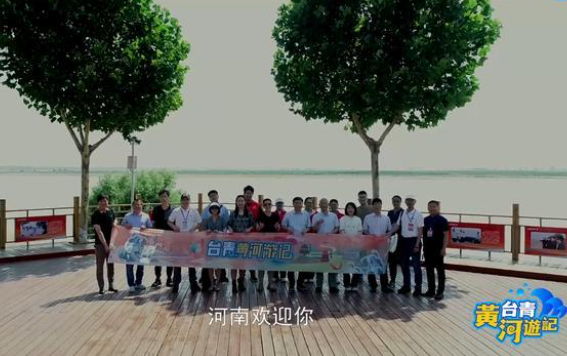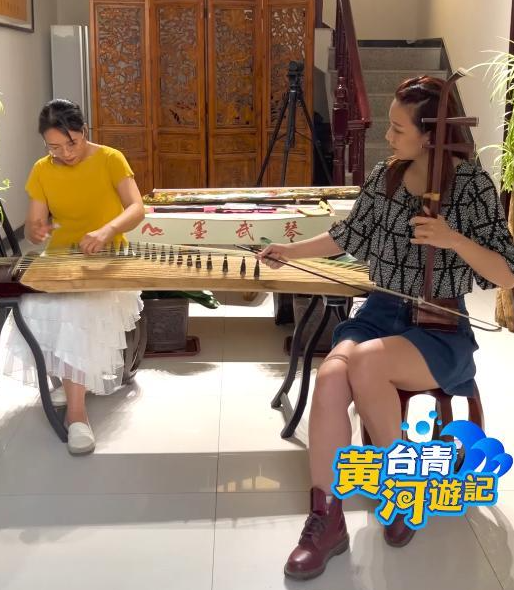Taiqing clocks in the nine songs of the Yellow River, and the young folk music ensemble on both sides of the strait "Jasmine"
292 views · Organized by vespa on 2022-06-22
Recently, a group of "Taiqing Yellow River Travel Notes" walked into Kaifeng City, Henan Province, and experienced the last bend of the "Nine Curves and Eighteen Bends of the Yellow River" up close. The last bend of the "Nine Curves and Eighteen Bends of the Yellow River" is located in the Lankao section of the Yellow River, showing a "U" shape. Because of its special shape, it is known as the "bean curd waist". The river is vast and majestic. The river beach with the fragrant birds and flowers is full of vitality.



In addition to checking in the iconic landscape of the Yellow River, Taiqing and his party also came to Shuyang Town, Lankao County, Kaifeng City, Henan Province. Kunyang Town is a well-known production base of ethnic musical instruments. Taiqing experienced the production process of many ethnic musical instruments and learned how the ethnic musical instrument industry drives local employment. Li Yanru, a young Taiwanese who is good at erhu performance, also played a piece of "Jasmine Flower" with a local ethnic musical instrument producer. The melody of the guzheng and the erhu complement each other.
Involving musical instruments
Guzheng (pinyin: Gǔ Zhēng), also known as Hanzheng and Qinzheng, is an ancient national musical instrument of the Han nationality and is popular all over China. It is often used for solo, duet, instrumental ensemble and accompaniment of song and dance, opera and folk art. Because of its wide range, beautiful timbre, rich playing skills and strong expressiveness, it is known as the "King of Music", also known as "Oriental Piano", and is one of the unique and important national musical instruments in China.
Erhu (Pinyin: Erhu) originated in the Tang Dynasty, called "Xiqin", and has a history of more than a thousand years. It is a traditional Chinese stringed instrument. Erhu, or Erxian Huqin, also known as "Nanhu" and "Omzi", is one of the main bowed and stringed instruments (wiping strings) in the Chinese national musical instrument family.
Guess you like
Organized by 汤圆 on 2025-04-10
In the treasure house of traditional Chinese music, the erhu has secured a place with its unique timbre and rich expressiveness. When the classic folk song "Dear Guest, Please Stay" meets the erhu, a distinctive artistic charm is created.
read >>
Organized by 苏肆 on 2025-03-11
In the brilliant galaxy of erhu art, "Moon Tooth Five Watches" shines like a pearl, captivating countless listeners with its unique charm and profound artistic conception. This piece is not a traditional "Five Watches Tune", but rather a solo erhu composition created by Mr. Liu Mingyuan, who drew inspiration from the Northeastern folk song "Moon Tooth Five Watches" and incorporated elements of opera music.
read >>
Organized by 尼禄 on 2025-02-27
In the 1970s, Mr. Liu Changfu, a master of the erhu, created a piece of music with a Mongolian flavor, "New Herdsmen on the Grassland", through his unique artistic perspective and profound cultural background. This composition not only depicts the magnificent scenery of the Inner Mongolia grassland but also sings the praises of the rich and colorful lives of the younger generation of herdsmen and their optimistic and cheerful spirits.
read >>
Organized by 象牙山首富 on 2025-02-14
"Early Spring in Miao Mountain" is a vibrant and dynamic erhu masterpiece that vividly portrays the life scenes and natural landscapes of the Miao people in southwestern China through its unique musical language. This piece not only showcases the rich expressiveness of the erhu, a traditional Chinese instrument, but also conveys the breath of spring and the rhythm of life through its notes.
read >>
Organized by 夜夜 on 2025-01-02
As an indispensable member of Chinese folk music, Erhu is deeply loved by musicians for its unique timbre and expressive force. However, because its structural materials are mainly natural materials such as wood and python skin, it is more sensitive to environmental changes, especially in the winter when the temperature drops sharply and the air is dry.
read >>



 渝公网安备 50010702504639号
渝公网安备 50010702504639号